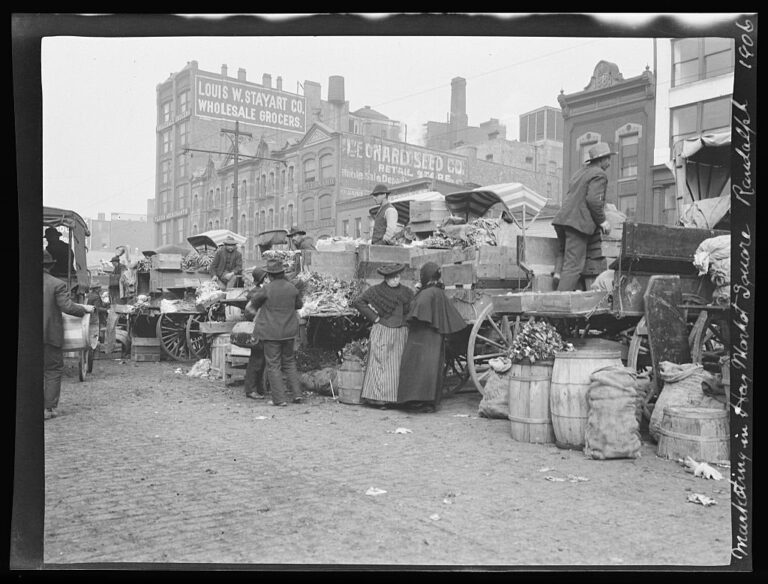The Haymarket Square Riot of 1886
Protest haven't always been peaceful.
By: Kelli Ballard | September 6, 2024 | 469 Words

Haymarket Square (Photo by Charles R. Clark/Chicago History Museum/Getty Images)
Since the founding of the nation, American laborers have wished for better working conditions and pay – and some were willing to fight for it. Throughout the years, many changes were made in the nature of labor in America – some good, some bad – and while most strikes and protests are peaceful, there have been some notable exceptions. The Haymarket Square Riot of 1886 is one of them.
From Rally to Riot
On May 1, 1886, workers from the Harvesting Machine Company in Chicago, Illinois, held a strike to demand an eight-hour workday. At the time, laborers often worked ten to 12 hours each day. On May 3, strikers attacked the people brought in by the company to replace them, and about two hundred police officers attacked the crowds in response, resulting in two workers being killed.
On May 4, more people gathered at Haymarket Square to continue the protest. Chicago Mayor Carter Harrison showed up with Police Captain John Bonfield and his men. He decided the rally wasn’t a threat, however, and ordered the police to stay about a block away. After Mayor Harrison left, however, the crowd grew violent, and Bonfield sent his men to break up the rally.
Then, a bomb was thrown from the crowd at the police, and the rally became a riot. When all was said and done, seven police officers were dead and sixty more were injured – many having been hit by shots fired by their fellow policemen in the panic following the explosion. It is estimated that a similar number of rally attendees were injured and killed, but the exact number remains unknown.
Anarchy on Trial
The police rounded up suspicious foreign workers and known anarchist leaders shortly after – some of whom hadn’t even attended the rally turned riot. Eight anarchists were arrested and charged in connection with the bombing. August Spies was a leading member of an anarchist group involved in the riot. Albert Parsons was a former Confederate soldier, and also the leader of the American anarchist branch. Though there was no proof shown that Parsons or Spies had anything to do with the bombing, the prosecution’s tactic of putting anarchy on trial was successful, and the guilty verdict came quickly. Both were convicted and hanged in 1887.
 Michael Schwab was at the rally briefly but left to speak at another before the explosion. Rather than the death sentence, he was given life in prison. Oscar Neebe, a declared communist, helped organize labor demonstrations and anarchist social events in the Chicago area; he didn’t attend the rally. He was sentenced to 15 years but was pardoned and released after seven years. Samuel Fielden, another anarchist member, was the final speaker at the Haymarket rally. He was originally sentenced to death but was sentenced instead to life in prison. He was eventually pardoned and released in 1893.
Michael Schwab was at the rally briefly but left to speak at another before the explosion. Rather than the death sentence, he was given life in prison. Oscar Neebe, a declared communist, helped organize labor demonstrations and anarchist social events in the Chicago area; he didn’t attend the rally. He was sentenced to 15 years but was pardoned and released after seven years. Samuel Fielden, another anarchist member, was the final speaker at the Haymarket rally. He was originally sentenced to death but was sentenced instead to life in prison. He was eventually pardoned and released in 1893.
















